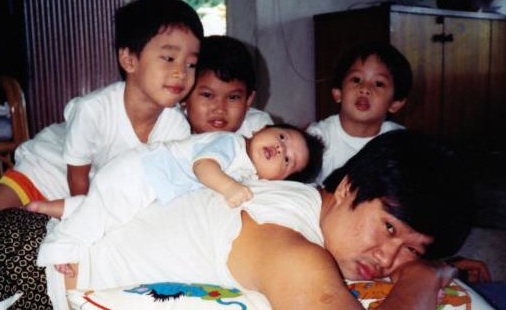The scourge of every kid and parents! Which moms wouldn't bring their kid to the nearest clinic asking for antibiotics and vitamin C?
However, evidence based reviews suggest 'wait and see' for most of these problems.
***************************
Most URTIs are self limiting.
Persistent symptoms more than 14 days should raise suspicions of other possible diagnosis.
Latest reviews suggest supportive measures in treatment of the common cold.
- Adequate hydration
- Warm fluids (ie. hot soup, tea)
- Honey
- Saline nasal spray or irrigation
- COLD humidifier (not warm)
Does not recommend:
- Over-the-counter cough and cold medications in children < 6 yo
- Using antibiotics in ABSENCE of secondary bacterial infections
- Antihistamines, ipratropium, decongestants in nasal congestion. Side-effects may bring more harm that benefits
- Antitussives, mucolytics or expectorants in treatment of coughs as there is no proven benefits and may cause adverse effects. WHO however recommend us of dextrometrophan in cases of severe symptoms but diagnosis needs to be reviewed and revised.
- Bronchodilators in non-asthmatic patients.
- Topical rubs containing aromatics for nasal obstruction
- Zinc and vitamin C
- Fever - in children > 3 mo, treated with acetaminophen or ibuprofen
- Nasal Congestion - as mentioned above.
- Cough - Ingestion of warm fluids or honey.
- Education on hand hygiene and non-contact of affected individual.
- No immunization to prevent common cold.
- Zinc, vitamin C are not proven to prevent the common cold.
********************************
There you have it, URTI treatment in a nutshell.
In our community I doubt parents would buy that. Perhaps placebo should do the trick?
Reference:
Pappas, D. E., et al., The Common Cold in Children, Treatment and Prevention, UpToDate Article, 2013.
Some Doses of Commonly used drugs:
Paracetamol - 15 mg/kg (max 4 g/day) oral
Dextromethorphan - 0.2 - 0.4 mg/kg 6 - 8 hourly oral
Bromhexine - 0.3 mg/kg tds oral 7 days
Actifed (Triprolidine HCl 1.25 mg, pseudoephedrine Hcl 30 mg) - > 12yo 10mL, 6 - 12 yo 5 mL, < 6yo 2.5 mL tds oral (syrup).
Benadryl (diphenhydramine Hcl 12.5mg, ammon Cl 125 mg) - > 1 yo 1/2 - 1 tsp 4 hourly (Max 6 tsp/24 hours)
Clarinase (Loratidine 5 mg, pseudoephedrine 60 mg) - > 30 kg 5 mL, < 30 kg 2.5 mL bd syrup.
